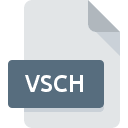.VSCH File Extension

Windows Vault Schema File
| Developer | Microsoft |
| Popularity | |
| Category | Data Files |
| Format | .VSCH |
| Cross Platform | Update Soon |
What is an VSCH file?
.VSCH files are associated with the Windows Vault, a feature introduced in Windows 7 and continued in subsequent versions of the operating system.
The Windows Vault serves as a secure repository for user credentials, such as usernames, passwords, and certificates, allowing for convenient access to applications and services without compromising security.
The .VSCH extension specifically denotes the schema files utilized by the Windows Vault to define the structure and organization of stored credentials.
These files play a crucial role in ensuring the integrity and accessibility of sensitive information stored within the vault.
More Information.
.VSCH files were introduced alongside the Windows Vault feature in Windows 7, marking a significant advancement in credential management within the Windows ecosystem.
The primary purpose of these files was to define the schema and organization of credential data stored within the vault, ensuring compatibility and interoperability across different applications and services.
Initially, .VSCH files were designed to facilitate the seamless integration of the Windows Vault with various applications and services, allowing developers to leverage its capabilities for secure credential storage and retrieval.
Over time, the scope and functionality of .VSCH files have evolved to accommodate changing security requirements and technological advancements.
Origin Of This File.
The inception of .VSCH files can be traced back to the development of the Windows Vault feature within the Windows operating system.
With the increasing emphasis on security and user privacy, Microsoft recognized the need for a centralized and secure mechanism to store and manage user credentials across various applications and services.
The Windows Vault emerged as a solution to this challenge, providing users with a centralized repository for storing credentials securely.
.VSCH files were conceived as a means to define the schema and structure of the data stored within the vault, enabling efficient retrieval and utilization of stored credentials.
File Structure Technical Specification.
.VSCH files adhere to a specific structure and technical specification defined by the Windows Vault schema.
These files typically contain metadata and configuration information that govern the organization and storage of credential data within the vault.
The structure of .VSCH files may include elements such as:
- Vault Item Types: Defines the types of credentials supported by the vault, such as generic credentials, domain credentials, or certificates.
- Properties and Attributes: Specifies the attributes associated with each credential type, such as username, password, or expiration date.
- Encryption and Security Settings: Determines the encryption algorithms and security measures employed to protect credential data stored within the vault.
- Schema Versioning: Specifies the version of the schema used by the .VSCH file, ensuring compatibility with different versions of the Windows operating system.
.VSCH files provide a comprehensive blueprint for the structure and organization of credential data within the Windows Vault, enabling secure and efficient credential management.
How to Convert the File?
Converting .VSCH files may be necessary to facilitate compatibility with other systems or applications.
While direct conversion tools are tailored specifically for .VSCH files may not be prevalent due to their niche nature, conversion to and from XML formats is feasible using various software utilities and programming libraries.
These tools enable users to manipulate .VSCH files and extract or transform their contents as needed.
Advantages And Disadvantages.
Advantages:
- Centralized Credential Storage: .VSCH files facilitate centralized storage of user credentials within the Windows Vault, streamlining access to applications and services.
- Enhanced Security: By leveraging encryption and other security measures, .VSCH files ensure the confidentiality and integrity of stored credential data.
- Interoperability: .VSCH files define a standardized schema for credential management, enabling interoperability across different applications and services within the Windows environment.
Disadvantages:
- Complexity: Understanding and managing .VSCH files may require a certain level of technical expertise, potentially posing challenges for novice users.
- Dependency on Windows Platform: .VSCH files are specific to the Windows operating system, limiting their usability in cross-platform environments.
- Risk of Data Breaches: Despite security measures, .VSCH files may still be vulnerable to data breaches if not adequately protected, highlighting the importance of robust security practices.
How to Open VSCH?
Open In Windows
- Native Support: Windows operating systems natively support .VSCH files. You can open them by double-clicking the file, which should launch the default program associated with .VSCH files, typically Windows Vault or Credential Manager.
- Third-party Applications: Alternatively, you can use third-party XML editors or viewers available for Windows, such as XML Notepad, Notepad++, or Visual Studio Code.
Open In Linux
- XML Editors: Linux distributions typically come with built-in text editors that can handle XML files. You can open .VSCH files using editors like Gedit, Kate, or Vim.
- Command Line: You can also use command-line tools like Vim or nano to view and edit .VSCH files directly from the terminal.
Open In MAC
- Text Editors: macOS includes a built-in text editor, TextEdit, which can open XML files, including .VSCH files. Simply double-click the file or drag it into the TextEdit application to view its contents.
- Third-party Applications: You can also use third-party XML editors available for macOS, such as BBEdit, TextWrangler, or Visual Studio Code.
Open In Android
- Third-party Apps: While .VSCH files are primarily associated with Windows systems, you can use third-party file manager apps available on the Google Play Store, such as File Commander or Solid Explorer, to navigate and open .VSCH files if they’re stored on your device or accessible through cloud storage services.
Open In IOS
- Third-party Apps: Similar to Android, you can utilize third-party file manager apps available on the App Store, such as Documents by Readdle or FileExplorer, to access and open .VSCH files stored on your iOS device or cloud storage platforms.













